NIL
Inside Quinn Ewers’ incredible fall from No. 1 overall recruit to seventh round pick in 2025 NFL Draft
Four years later, it’s hard to remember just how heralded Quinn Ewers was as a recruit. He became the first recruit at any position since 2016 to earn a perfect 1.0000 rating in the 247Sports composite, and joins Longhorns legend Vince Young as the only quarterback to hit the mark in the metric’s history (since […]
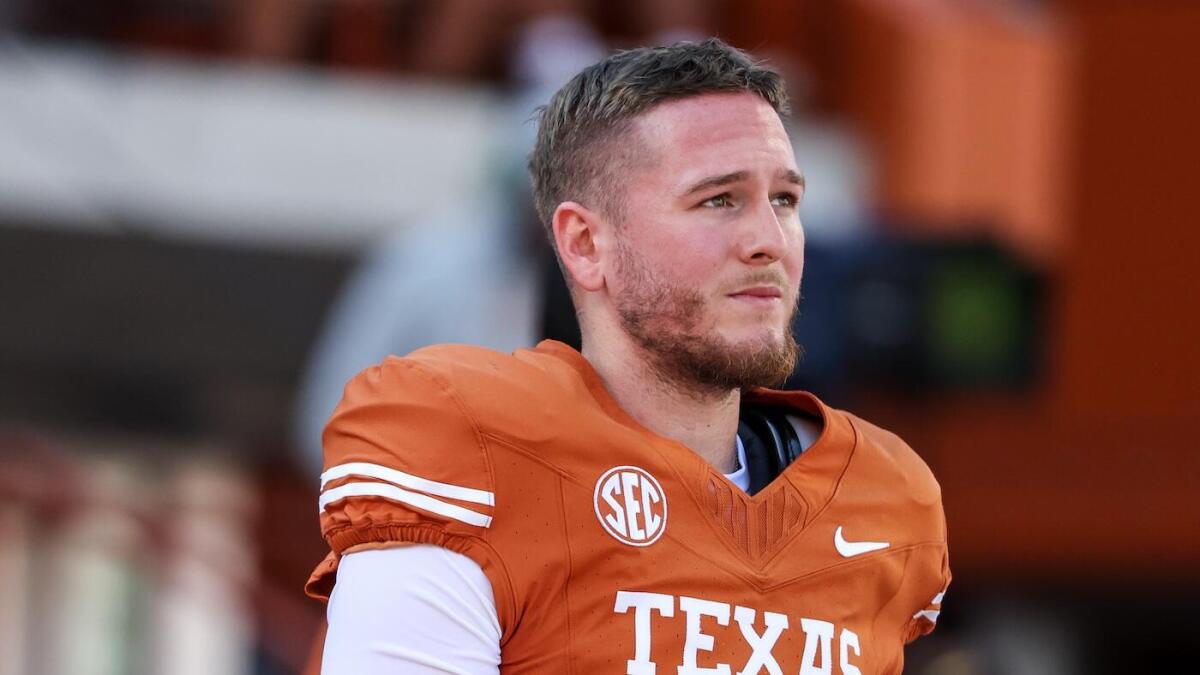
Four years later, it’s hard to remember just how heralded Quinn Ewers was as a recruit. He became the first recruit at any position since 2016 to earn a perfect 1.0000 rating in the 247Sports composite, and joins Longhorns legend Vince Young as the only quarterback to hit the mark in the metric’s history (since 2000). When he decommitted from Texas in October 2020, it was the final nail in the coffin for Tom Herman, who was fired shortly thereafter.
Ewers was so highly regarded that he reclassified so he could collect a seven-figure NIL contract a year early. No matter, he went from the No. 1 player in 2022 to the No. 1 player in 2021. Ewers used the most exclusive quarterback room in America, Ohio State, as a de facto study abroad program before ultimately ending up in Austin as Steve Sarkisian’s protégé.
On Saturday, his college story ended with the 231st pick of the seventh round of the 2025 NFL Draft. He was 14th out of 14 quarterbacks selected, behind even FCS quarterbacks Tommy Mellott and Cam Miller. It was not the finish anyone expected for one of the most high-profile quarterback recruits in the history of the sport.
How did we get here, from No. 1 overall recruit to the seventh round? It’s a complicated story filled with the trappings of this era, injuries and the battle between cash grabs and legacy that makes him a case study in the impossible decisions asked of quarterbacks in this moment.
Reclassification saga
The first time I watched Ewers play live was during the 2020 Texas Class 6A-D1 State Championship Game. Ironically, he played for Southlake Carroll against Clemson’s Cade Klubnik, who went on to become the No. 1 quarterback in the 2022 class after Ewers reclassified. Even competing against another highly ranked QB while dealing with injuries during a loss, Ewers was a man among boys. He threw for 350 yards against one of the top defenses in state history.
What no one realized at the time was that they were watching Ewers’ final high school football game. Instead of riding into his senior year under heralded quarterback developer Riley Dodge, he suddenly reclassified so he could pursue seven figures in NIL deals, primarily with a kombucha company. He arrived on campus in August before the season after not going through either spring or summer drills. Ohio State made clear that they weren’t thrilled about the timing but still took him for his prodigious talents.
There was little opportunity for Ohio State to dedicate any real development time to Ewers with C.J. Stroud, Kyle McCord and Jack Miller already on campus. Instead, Ewers essentially came, drove a massive truck he received through an NIL contract, collected checks, and then transferred to Texas. Ewers also benefitted from the NCAA’s new rule that allowed players to transfer without sitting out, so he could leave immediately and start.
Did Ewers stunt his development by leaving a quarterback development factory in Southlake to be an afterthought in Columbus? Not necessarily, but it likely didn’t help.
Injury woes
Even dating back to high school, Ewers struggled to stay healthy. He dealt with a core issue during his final high school season that cost him multiple games. After winning the starting job at Texas, he dealt with injury issues each of his three years.
Ewers suffered major sprains of his SC joint (2022) and AC joint (2023) in his shoulders that cost him multiple games. In 2024, the core issues popped up again after a non-contact abdominal strain against UTSA. His efficiency fell from Year 2 to Year 3 after playing through some of the discomfort.
Overall, Ewers missed seven starts across three years, which opened the door for Arch Manning, Maalik Murphy and Hudson Card to start in his wake. Ewers always fought back — his toughness was never appreciated enough — but it remains unclear how much the injuries have to do with losing some of the zip and accuracy he displayed during his sensational high school career.
For many college football fans, it was confusing that Ewers was ever considered such a can’t-miss prospect with his limitations. Go watch his high school tape. It wasn’t always that way.
Manning’s arrival at Texas
Ewers is one of the most touted quarterback recruits in the history of the sport. Unfortunately for him, his college career was often defined by one of the few who surpass him: Arch Manning, who was also a No. 1 overall quarterback recruit for 2023, but with the most famous name in football on his back. Whereas some wanted Ewers to see playing time at Ohio State when Stroud struggled early, the noise for Manning was raucous from the start.
Sarkisian handled the situation about as well as possible. From the start, he was clear: Ewers was the starting quarterback. That was echoed by both Ewers and Manning, along with every other member of the team. Still, almost every week involved at least some question about the famous last name.
Arch Manning in 2026 NFL Draft? Could the prospect of going No. 1 cut Texas QB’s college career short?
Will Backus
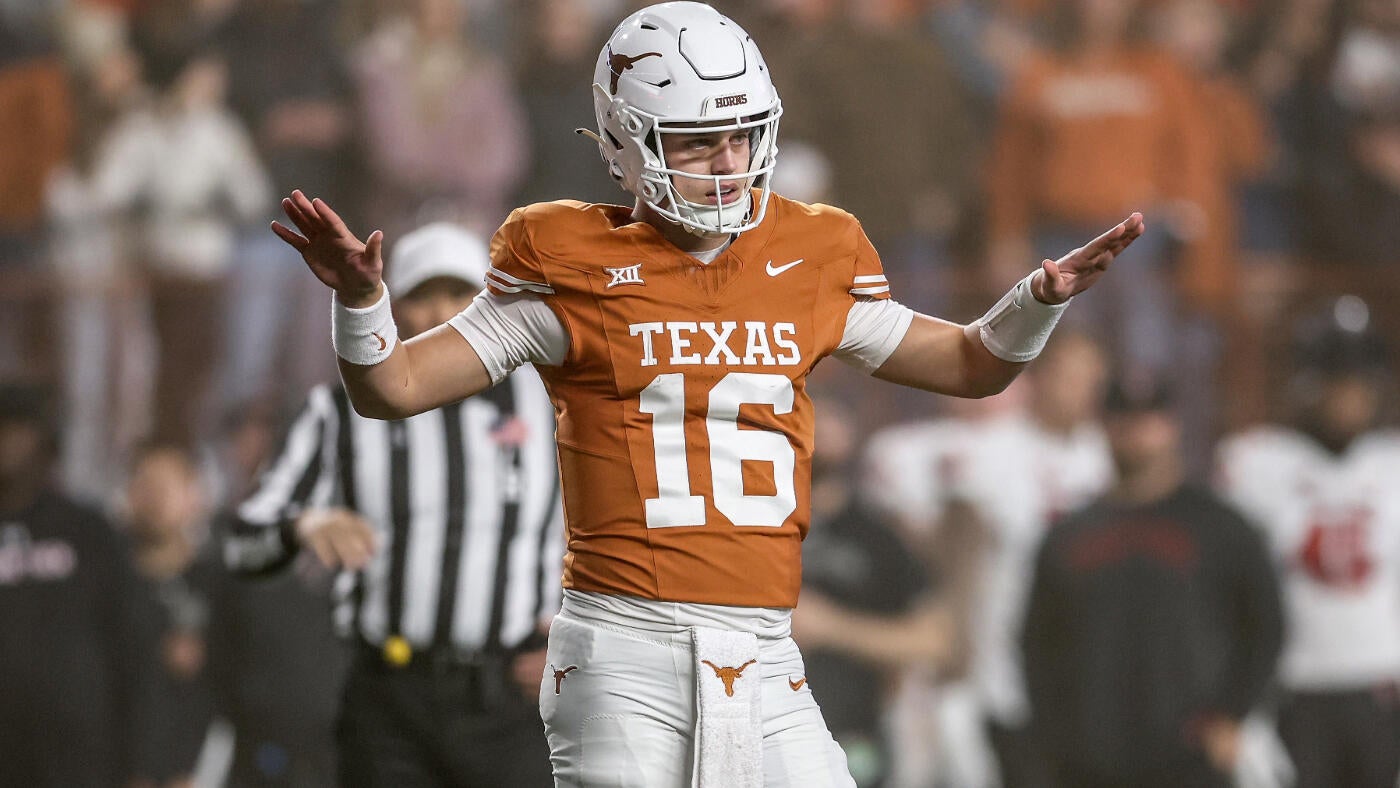
There were moments when the pressures of having a famous backup QB clearly impacted Ewers. He was pulled for a few drives near halftime of the 2024 Georgia game. Though he looked rattled on the sideline, Ewers came back in and played better. He also rushed back from his abdominal injury and never truly looked healthy.
Most teams would take a fourth season from a two-time all-conference quarterback. That was never the case at Texas. The Manning era starts now.
Ewers’ legacy
Ewers potentially left millions of dollars on the table by turning down the transfer portal and entering the NFL Draft. Notre Dame and Miami were among the programs that reportedly did their homework on Ewers before he opted to turn pro. There’s no sugarcoating it: there’s a real chance that Ewers never makes that much money for the rest of his life.
Despite his draft slot, Ewers had a tremendously successful college career. He led Texas to back-to-back national semifinals, the only team to accomplish the feat each of the past two seasons. Both times, they were one play away from making the national title game. The program had a top-five finish drought dating back to 2009, and Ewers led the Horns there in each of his last two seasons. Ewers threw for 9,128 yards and 68 touchdowns on 64.9% completion in three seasons — outstanding numbers for any pedigree.
How much money did Quinn Ewers lose by not returning for NIL in college football, sliding in 2025 NFL Draft?
Richard Johnson
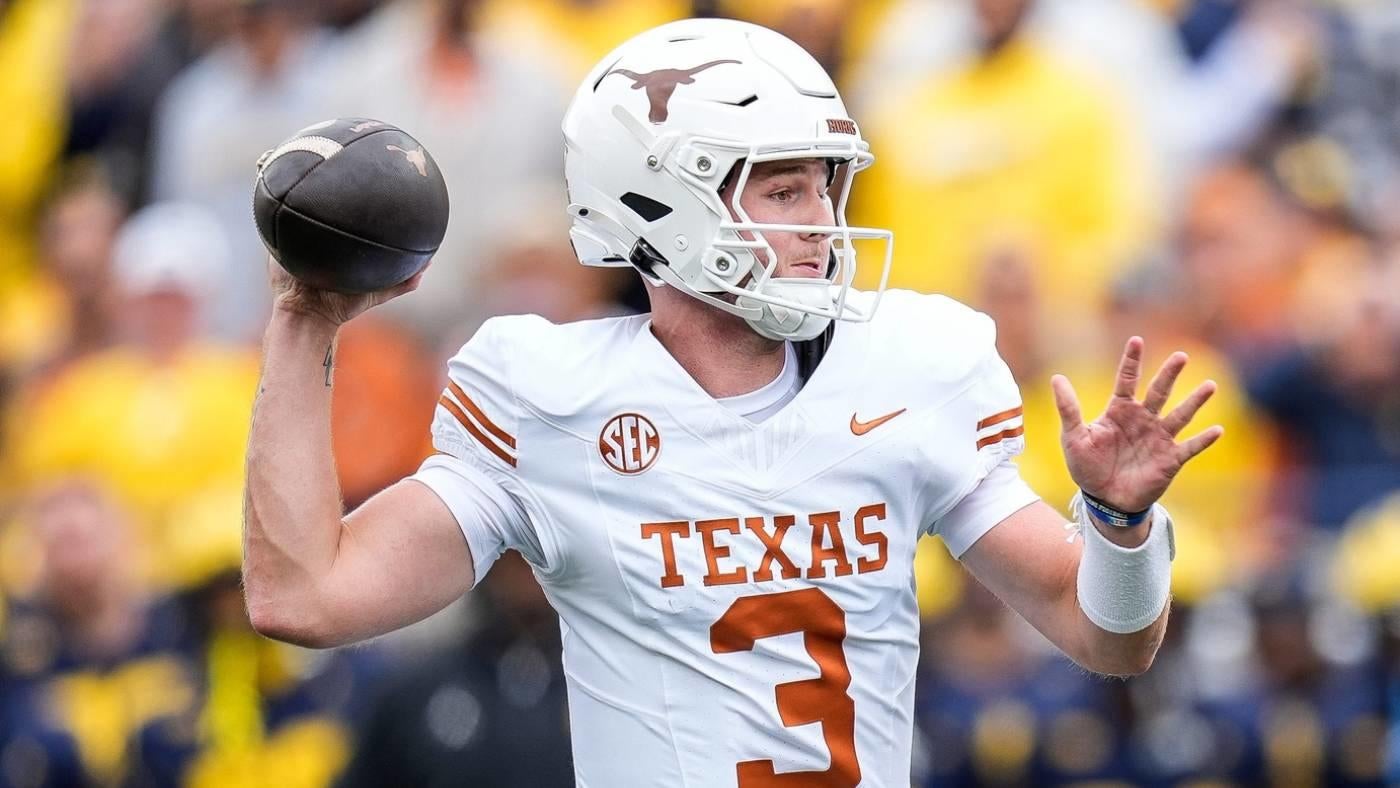
Frankly, there’s something to be said for leaving college football when it’s time. Ewers started three years at a blue-blood school and leaves as one of the top five greatest quarterbacks in the history of the program, behind only Colt McCoy and Vince Young post-integration. In an era when players are ruining legacies to chase short-term money, Ewers was even more valuable. Young, for example, has been hired multiple times as an athletic department ambassador. Ewers could easily go down a similar path with his reputation in Austin.
If anything, Ewers’ decision to move on from college to the NFL without any guarantees is an emblem of how much he’s grown over the past four years. With the Miami Dolphins, Ewers finds a solid fit and a realistic chance to grow into a rostered quarterback behind Tua Tagovailoa and Zach Wilson. If it doesn’t work out, he’ll head into the world with a few million dollars in his bank account and the support of the UT network behind him.
“I think about a lot of the people that come through this program over the last four years that have impacted the growth and trajectory of our program, and he’s right there near the top, if not at the top of the impact that he’s had, not only on the field but off the field,” Sarkisian said Monday. “His ability to help recruit other players come be part of our program. I think he was one of the first guys through all this talk about collective and all the things that were going on in the world of NIL, he never took money from our collective. All of what he did through NIL was his true Name, Image, and Likeness — the intent of the rule. On that front I’m very grateful for what he did for our program.”
Still, Ewers’ arc will be an instructive one about the complications of the modern era of being a college quarterback. Stock rises and falls faster than anyone can imagine — even for the No. 1 quarterback in the country.

Horns247 has one of the most experienced journalists in the Texas market in Chip Brown. The site has broken countless stories over the last two decades. Newcomer Eric Henry has already made his presence felt in the market, and Hank South and Jordan Scruggs have Longhorns recruiting on lockdown. Sign up for a VIP membership now and join the conversation on The Flagship!
NIL
Colleges across US can pay athletes directly in landmark NIL agreement
Schools across the United States can now directly pay college athletes under a landmark settlement approved by a federal judge on Friday, June 6. The agreement, valued at $2.8 billion, established a 10-year revenue-sharing model in college sports, enabling athletic departments to distribute approximately $20.5 million in name, image and likeness (NIL) revenue to athletes […]
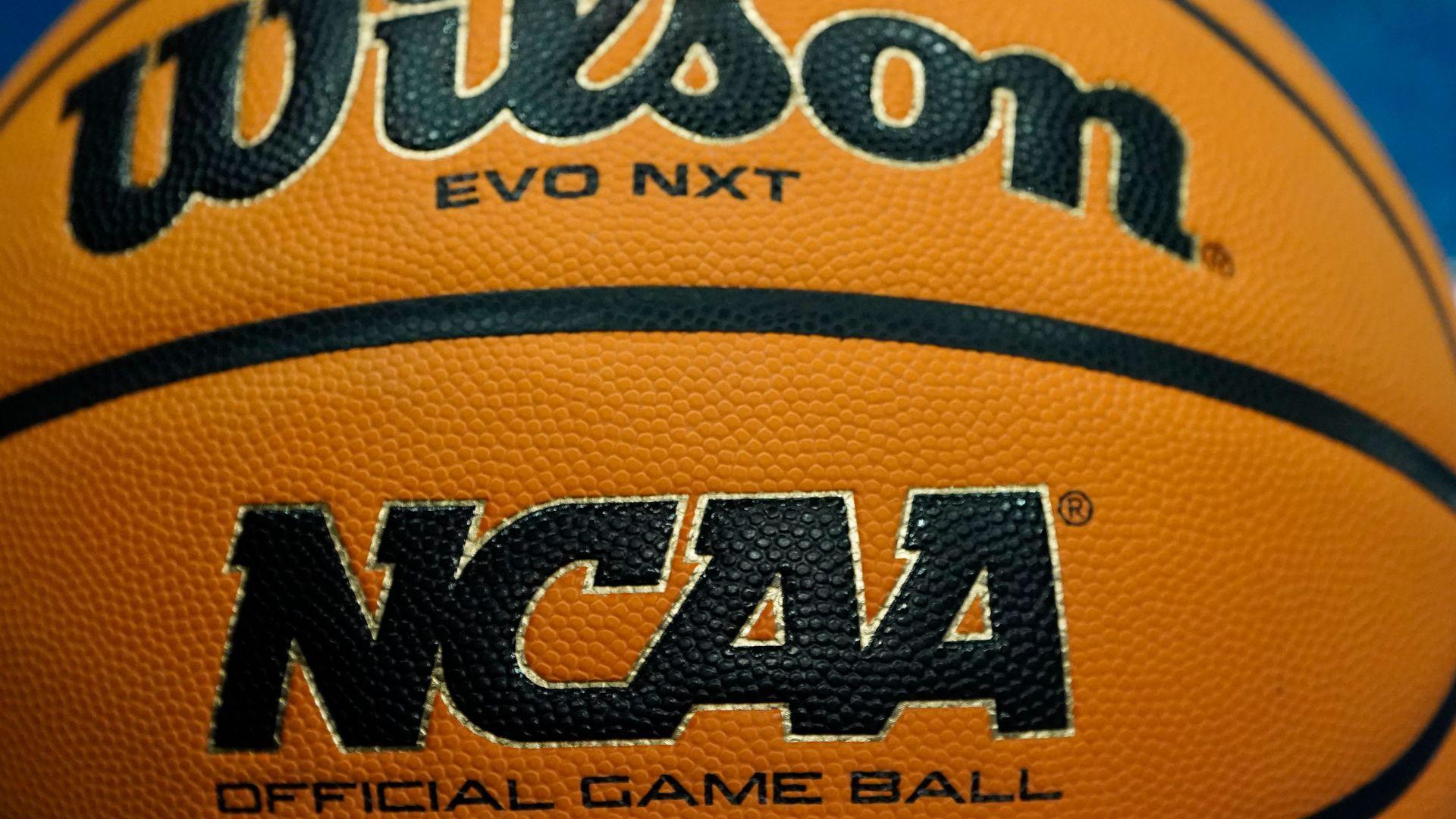
Schools across the United States can now directly pay college athletes under a landmark settlement approved by a federal judge on Friday, June 6. The agreement, valued at $2.8 billion, established a 10-year revenue-sharing model in college sports, enabling athletic departments to distribute approximately $20.5 million in name, image and likeness (NIL) revenue to athletes during the 2025-26 season.
Additionally, the NCAA will pay nearly $2.8 billion in damages to Division I athletes who were previously prohibited from signing NIL deals, with compensation dating back to 2016. U.S. District Judge Claudia Wilken initially declined to approve the settlement due to concerns over scholarship limits, which would have caused thousands of athletes to lose spots on Division I teams.
After revisions, implementation of these limits may now be delayed for several years, allowing schools more time to adapt. The changes will also allow colleges to offer more full or partial athletic scholarships, reshaping the financial and competitive aspects of college sports.
Participation in the revenue-sharing model is voluntary, and institutions that choose to take part are not required to pay the full $20.5 million. The Ivy League, for example, opted out of the settlement, choosing to continue its longstanding amateurism rules for student athletes. The league recently won an antitrust lawsuit upholding its policy against offering athletic scholarships.
The settlement builds on legal challenges that have reshaped NCAA regulations in recent years. In June 2021, the U.S. Supreme Court unanimously ruled against the NCAA in a landmark decision, asserting that college athletics should be treated more as a commercial enterprise than as an education-focused activity. This ruling triggered a wave of lawsuits and scrutiny that have greatly disrupted the collegiate sports landscape.
NCAA President Charlie Baker expressed optimism about the settlement, calling it a pivotal moment for college athletics.
“Approving the agreement reached by the NCAA, the defendant conferences and student-athletes in the settlement opens a pathway to begin stabilizing college sports,” Baker said. “This new framework that enables schools to provide direct financial benefits to student-athletes and establishes clear and specific rules to regulate third-party NIL agreements marks a huge step forward for college sports.”
The agreement signals a transformative shift in the treatment of college athletes, challenging traditional notions of amateurism while advancing their financial rights. By allowing direct payments to athletes, the settlement introduces a new era in which student-athletes are recognized as contributors to a lucrative entertainment industry, with wide-ranging implications for recruitment practices, competitive balance and the prioritization of sports programs at higher education institutions.
NIL
What Does the New NIL Ruling Mean for Syracuse Basketball?
Share Tweet Share Share Email After the new ruling on NIL, college sports will never be the same. In a landmark decision, a federal judge ruled that schools can now pay their athletes directly, bringing an end to a lengthy legal process between the NCAA and the lawyers representing the organization’s athletes. Schools will reportedly […]

After the new ruling on NIL, college sports will never be the same.
In a landmark decision, a federal judge ruled that schools can now pay their athletes directly, bringing an end to a lengthy legal process between the NCAA and the lawyers representing the organization’s athletes.
Schools will reportedly start paying their athletes as soon as July 1, with the NCAA set to pay nearly $2.8 billion in damages over the next 10 years. Those payments will be for former athletes who competed in college at any time from 2016 to this year.
As for how the changes affect current Syracuse teams and athletes, each school can pay its athletes up to roughly $20.5 million across all sports for the 2025-26 academic year. The payments will be in addition to any scholarships or existing benefits any athletes already have, and the $20.5 million cap will increase every year over the next decade.
On the surface, this is a major win for athlete representation. The NCAA was only delaying the inevitable by trying to fight this, and the new system was always the direction college sports were headed after NIL was introduced.
At the same time, it spells trouble for Syracuse sports, specifically men’s basketball. Last year, the Orange struggled to one of the worst seasons in program history, and it was a step behind the ACC in its NIL spending. As a result, their roster wasn’t good enough to compete in a conference that sent a historically low number of teams to the NCAA Tournament this year.
Syracuse was active in the transfer portal this offseason to address those weaknesses, but next offseason could define how the Orange approach building their roster for years to come.
If it took Syracuse this long to adjust to the NIL system, there’s no reason to believe they won’t have the same struggles in a new system where college athletes are paid directly.
For now, there’s plenty to look forward to for Syracuse basketball fans as the team will be competitive in the ACC next season, especially with the arrival of incoming top prospects like Kiyan Anthony. Looming next offseason, though, could be an offseason that either cements Syracuse as one of the best basketball programs in the country or one that can’t keep up in a new era of college basketball.
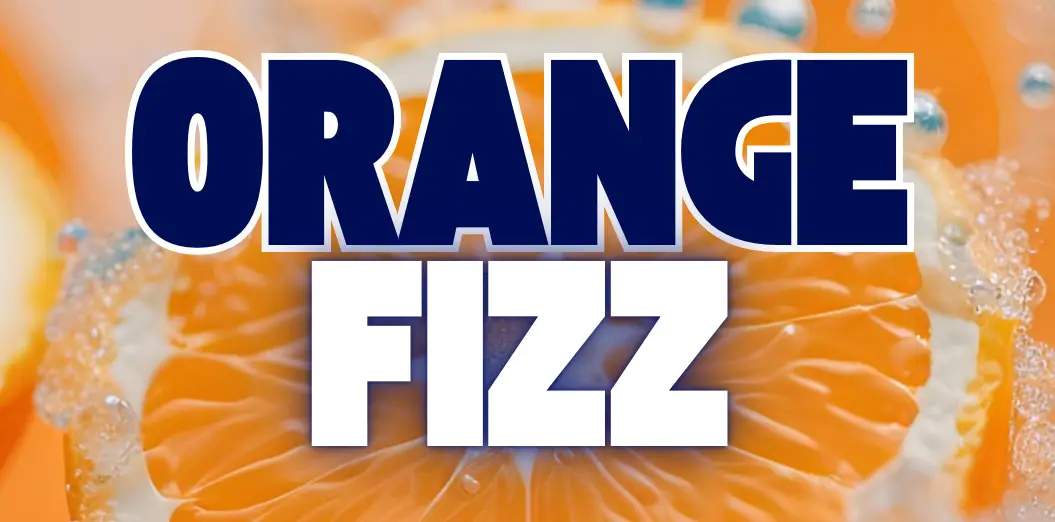
NIL
Arizona athletic department primed to reap benefits of recently approved revenue sharing in college sports
When there’s a weather delay in a college game, whether it be baseball, football or soccer, a countdown starts to when play can resume. But each time lightning is spotted within a certain proximity of the outdoor venue, that clock resets. That’s how it had felt for athletic director Desiree Reed-Francois and her staff as […]

When there’s a weather delay in a college game, whether it be baseball, football or soccer, a countdown starts to when play can resume. But each time lightning is spotted within a certain proximity of the outdoor venue, that clock resets.
That’s how it had felt for athletic director Desiree Reed-Francois and her staff as they sat around waiting for a federal judge to sign off on a landmark settlement that is set to usher in a new era of college athletics.
“We have been preparing for this four months,” Reed-Francois said Saturday while attending Arizona baseball’s Super Regional series at North Carolina. “We’re ready to rock and roll. I’m so excited for that, that we’re actually here.”
Late Friday Judge Claudia Wilken gave formal approval to a settlement negotiated between the NCAA and several parties—House v. NCAA—that, among other things, will allow Division I schools to share up to $20.5 million worth of revenue annually with student-athletes. Those payments can start being issued on July 1. Arizona long ago opted into this settlement and have come up with a formula for how the revenue will be distributed.
Reed-Francois declined to break down the percentage going to each sport, though it’s expected that Arizona (like most schools) will give the vast majority to football with men’s basketball getting the next-highest amount followed by women’s basketball. She said the UA will be one of the few schools including softball in revenue-sharing.
“Whenever you’re implementing something of this magnitude, we know there are going to be bumps along the way, but we are trying to mitigate those risks and those bumps,” she said. “And like we said from the very beginning, we had three priorities when we developed our house implementation strategy: that was to be fair, very competitive and good physical stewards of our resources. So we think our program does that, and we look forward to now all systems are go.”
The settlement also ushers in a set of roster limits for each NCAA sport, along with the ability for schools to fully or partially fund scholarships for every spot. The biggest winner in that respect is baseball, which will go from having only 11.7 scholarships available to as many as 34, but that also means it can’t have more than 34 on the roster after previously having up to 40.
Football goes from 85 scholarships and unlimited walk-ons to a hard cap of 105 players, and men’s and women’s basketball can only have 15 players on the roster. This past season the UA men’s basketball team had 20 players including nine walk-ons.
One issue that had held up the settlement was a proposal to “grandfather” existing student-athletes from roster limits, so as to not have to cut a bunch from certain teams. Schools will have to designate which student-athletes are exempt from roster limits but they’re unlikely to be eligible for revenue sharing.
Additionally, the settlement creates a clearinghouse for all NIL deals separate of revenue sharing, requiring ones worth $600 or more to get approval. That applies to all deals signed as of Saturday, while ones signed before then have to be fully paid out by July 1 or the remaining payments have to get approved.
In theory, this is meant to keep schools from paying a large sum to a player to transfer and dismissing it as an NIL deal. The NIL Go clearinghouse will be administered by the new College Sports Commission, which will also be in charge of any enforcement issues.
“This settlement is progress,” Reed-Francois said. “Is it perfect?”
Reed-Francois believes this will put Arizona on a level playing field with all other D-I schools.
“We are a championship brand,” she said. “We can compete against anyone. We all have the same guidelines. We all have the same cap, $20.5 million, so now let’s take advantage of our natural advantages. Now there are uniform guidelines. That’s why we’re so optimistic. We recognize there’s going to be challenges along the way. This gives us one set standard, and we’ll compete with anyone.”
NIL
Zac Selmon addresses why Mississippi State invests NIL, resources in baseball
Mississippi State Athletic Director Zac Selmon made a splash earlier this month when he poached National Championship winning coach Brian O’Connor from Virginia to replace Chris Lemonis, who was fired mid-season. During O’Connor’s time with the Cavaliers, he led the program to an 885-370-2 (362-234-1) overall record. In that time, he was named ACC Coach […]
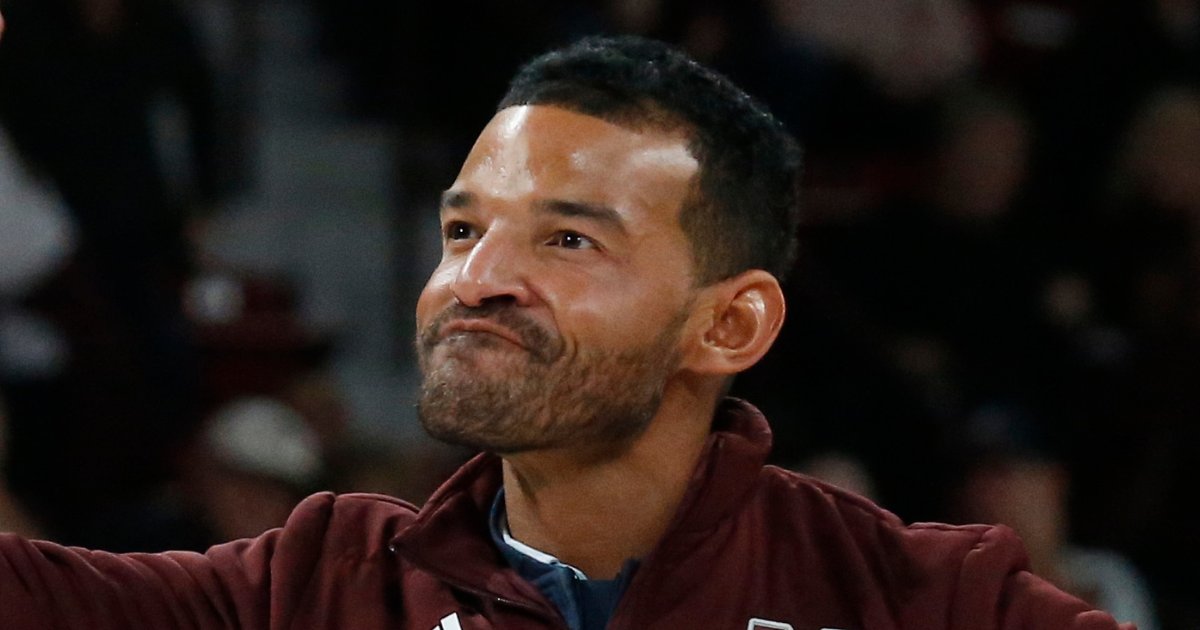
Mississippi State Athletic Director Zac Selmon made a splash earlier this month when he poached National Championship winning coach Brian O’Connor from Virginia to replace Chris Lemonis, who was fired mid-season.
During O’Connor’s time with the Cavaliers, he led the program to an 885-370-2 (362-234-1) overall record. In that time, he was named ACC Coach of the Year five times, helped the Cavaliers to two ACC titles, made seven total trips to the Men’s College World Series and won a National Championship in 2015.
After winning the National Championship in 2021, Mississippi State posted just a 129-102 (50-70) record over the next four seasons. In that span, the Bulldogs made two NCAA Tournaments but failed to advance to a Super Regional.
Selmon explained why this was unacceptable and why they’ve spent the resources to completely rebuild the Mississippi State baseball program (from the players to the staff) this offseason. Simply put, they want to get back to Omaha.
Selmon wants to dog-pile in Omaha
“It’s important because of the players we’ve had here,” Selmon said. “Throughout this process, I’ve heard from so many great players. It’s household names that you grew up listening to or knowing who they were. I’m blessed to have coach [Ron] Polk here everyday. To get to be around people like that, you start to know what the expectation is. You can’t do anything now unless you put resources behind it. So much of our business has changed and we’ve had some unbelievable supporters that have stepped up throughout this entire year and specifically throughout this week because they want to be a part of it.”
Dudy Noble Field, which opened in 1967, is often regarded as one of the best stadiums in all of college baseball. It set its record attendance of 16,423 fans back in 2023, showing how massive fan support for baseball is at the university.
“Our job is to make sure we put our programs in a position to be successful, and we can’t do it in this era without a lot of support,” Selmon said. “For us, we’re committed to making sure we put our coaching staff in a position to where we fast forward 20 years from now, we see letter-winners come back and say ‘man, do you remember that time we dog-piled in Omaha?”
“It starts with the investment we made today, and clearly it’s something we know it’s going to be so good for not only our athletics department, but our entire institution and the state of Mississippi. That’s something we’re really excited about.”
NIL
UofL vs Miami super regional schedule
Louisville baseball coach, players on super regional win vs. Miami Louisville baseball beat Miami 8-1 in the NCAA Super Regional Friday. The Cardinals are one win away from going to the College World Series in Omaha. The ACC will have at least one team in the 2025 College World Series bracket with Louisville baseball hosting […]

Louisville baseball coach, players on super regional win vs. Miami
Louisville baseball beat Miami 8-1 in the NCAA Super Regional Friday. The Cardinals are one win away from going to the College World Series in Omaha.
- The ACC will have at least one team in the 2025 College World Series bracket with Louisville baseball hosting Miami in NCAA Tournament super regionals.
- Louisville routed Miami 8-1 in Game 1 at Jim Patterson Stadium on Friday thanks to impressive pitching by righty Patrick Forbes and clutch hitting by Jake Munroe. The Hurricanes won Game 2.
Coverage from the game:
Louisville baseball still win away from College World Series after falling short vs. Miami
Coverage during the game:
The ACC will have at least one team in the 2025 College World Series bracket. Louisville baseball and Miami are set to play in Game 2 of the NCAA Tournament super regionals at 11 a.m. today. Both teams have experience playing in Omaha, though Louisville has been most recently.
The Cardinals routed Miami 8-1 Friday on a rainy evening at Jim Patterson Stadium thanks to impressive pitching by righty Patrick Forbes and clutch hitting by Jake Munroe.
Miami’s last trip to the CWS was in 2016, and U of L went three years later. So, which one will return to Omaha this year?
Stay tuned below for updates throughout the second game of the Louisville vs. Miami super regional series.
Stream Louisville baseball vs. Miami (free trial)
The Cards’ rally fell short, after bringing the tying run to the plate with no outs.
1 run, 2 hits, 0 errors, 2 LOB
Miami’s Daniel Cuvet hit his 18th homer on the season with a three-run shot off Starke.
3 runs, 3 hits, 0 errors, 0 LOB
The Canes brought their closer Brian Walters, who has 10 saves this season, and he got the Cards out in order.
0 runs, 0 hits, 0 errors, 0 LOB
Dorian Gonzalez hit a lead-off double and was brought home by a Renzo Gonzalez single.
1 run, 2 hits, 0 errors, 1 LOB
The Cards brought in left hander Ty Starke to relieve Jack Brown, who faced five batters in 1.1 innings. Starke will face Renzo Gonzalez with a runner on third and one out.
Just when it seemed the Cards bats had cooled off, Eddie King Jr., belted his second homer of the game to tie the score.
1 run, 1 hit, 0 errors, 0 LOB
The Cardinals turn a 5-4-3 double play to eliminate the Hurricanes’ scoring opportunity.
0 runs, 1 hit, 0 errors, 0 LOB
Jack Brown will start the sixth inning on the hill for the Cardinals. Wyatt Danilowicz ends his day with a strikeout and walk without giving up a hit over 1 1/3 innings.
The Hurricanes retire the side to preserve their one-run lead.
0 runs, 0 hits, 0 errors, 0 LOB
After walking one batter and hitting another, Wyatt Danilowicz made the final two plays to end the inning.
0 runs, 0 hits, 0 errors, 2 LOB
Eddie King, Jr. and Garret Pike are left stranded after Carson Fischer struck out the final two batters.
0 runs, 0 hits, 0 errors, 2 LOB
Jake Ogden’s two-out, three-run home run helped the Hurricanes regain the lead.
4 runs, 4 hits, 1 error, 2 LOB
Tucker Biven’s day ends with him allowing five runs, one earned, on seven hits with a strikeout and two walks in 3 2/3 innings. Wyatt Danilowicz will now enter the game for the Cardinals
With the bases loaded and two out, Kamau Neighbors got caught stealing to end the inning.
0 runs, 2 hits, 0 errors, 2 LOB
Evans threw 2/3 of an inning, allowing a hit while plunking a batter, and is replaced by Carson Fischer.
After giving up a leadoff home run to Jake Munroe and a single to Tague Davis in the top of the fourth inning, Griffin Hugus is replaced on the mound by Rob Evans. Hugus ended the day allowing four earned runs on five hits with one strikeout and two walks in three-plus innings on the mound.
The Cardinals preserve their lead with a 1-2-3 inning.
0 runs, 0 hits, 0 errors, 0 LOB
Eddie King, Jr.’s two-run home run to left-centerfield highlighted the Cardinals’ three-run inning.
3 runs, 2 hits, 0 errors, 0 LOB
The Hurricanes strike first with Michael Torres’ two-out RBI base hit.
1 run, 2 hits, 0 errors, 2 LOB
Eddie King, Jr. and Tague Davis were left stranded at the corners after Griffin Hugus struck out Kamau Neighbors.
0 runs, 1 hit, 0 errors, 2 LOB
Jake Ogden is left stranded after hitting a leadoff double as the Cardinals retired the next three batters.
0 runs, 0 hits, 0 errors, 0 LOB
Matt Klein reached base after getting hit with a pitch, but a Hurricanes double play ended the inning.
0 runs, 0 hits, 0 errors, 0 LOB
Tucker Biven will get the start for the Cardinals with a trip to Omaha on the line. The right-handed pitcher is 3-0 on the season with 31 strikeouts over 35 innings and 20 appearances with four starts.
- Date: Saturday, June 7
- Time: 11 a.m. ET
- Where: Jim Patterson Stadium
Louisville baseball’s Dan McDonnell on pitcher Patrick Forbes’ talent
Louisville baseball coach Dan McDonnell explains what makes pitcher Patrick Forbes a great athlete and Forbes’ future at the professional level.
Here is the latest college baseball schedule and NCAA Tournament bracket update.
Reach Louisville football, women’s basketball and baseball beat writer Alexis Cubit at acubit@gannett.com and follow her on X at @Alexis_Cubit.
NIL
5 former College Football stars deserve the most back pay from the NCAA settlement
On Friday Night, College Football changed forever as Judge Claudia Wilken signed off approving the settlement in the landmark House Vs NCAA case. The case brings about wholesale changes to College Athletics like we know it as revenue sharing, roster limits, NIL regulations, and a ton of new aspects are brought to the sport. As […]
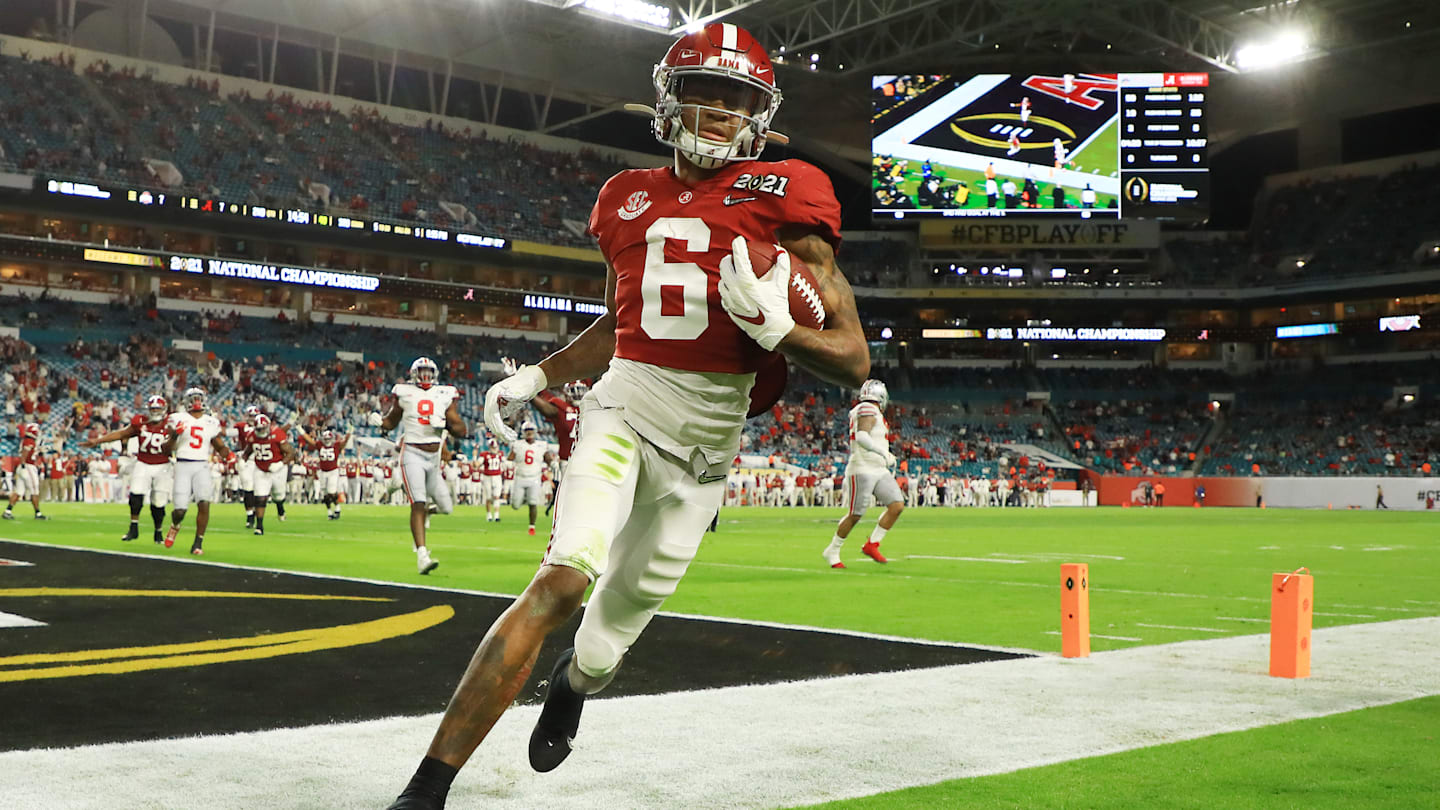
On Friday Night, College Football changed forever as Judge Claudia Wilken signed off approving the settlement in the landmark House Vs NCAA case. The case brings about wholesale changes to College Athletics like we know it as revenue sharing, roster limits, NIL regulations, and a ton of new aspects are brought to the sport.
As part of the settlement, the NCAA also agreed to back pay former athletes $2.8 billion over the next ten years. The athletes that will receive the funds had to of played since 2016 through current day. It seems more fair that the players prior to 2020 who weren’t in this modern era should get the lions share of the funding.
Based on star power, potential earnings they missed out on, and their impact to the game, 5 former College Football stars deserve the backpay more than anyone else.
Part of the reason that many of the athletes feel they missed out on NIL is the fact that they emerged as stars as true freshmen before putting together great careers as a whole. DeVonta Smith perfectly fits the bill as he played sparingly as a Freshman before catching the National Championship game winner against Georgia.
From that moment on, DeVonta Smith and Tua Tagovailoa would’ve been NIL stars with their entire careers ahead of them. Instead, DeVonta Smith’s Sophomore and Junior seasons were among some of the best in the Country in a star-studded Alabama offense.
If Devonta Smith wasn’t earning a ton by his Senior season, it would’ve been more than enough for him to earn massive NIL deals. Winning the Heisman Trophy and a National Championship as a Senior would’ve made Smith one of the most sought after players in recent history.
Like DeVonta Smith, Tua Tagovailoa’s burst onto the scene in the National Championship Game would’ve been a great moment to launch him into superstardom. Over the next two seasons, Tagovailoa was the engine of the most explosive offenses of Nick Saban’s time in Tuscaloosa which would’ve made him an attractive option for companies spending NIL money. Luckily in Tua’s case an d for some others on this list, it’s tough to feel too bad seeing the NFL contracts for quarterbacks.
The NIL backpay dating back to 2016 puts Lamar Jackson solely in the conversation as one of the athletes that could’ve cashed in. After winning the Heisman Trophy in 2016, Lamar Jackson would’ve had a whole season to cash in on the fact that he had just won the Heisman Trophy. In a State where we’re seeing athletes cash in with big deals in basketball, Jackson would’ve gotten a massive NIL deal simply not to transfer elsewhere.
Joe Burrow’s case is a little more difficult to make just because of when in his career he became a superstar. When Joe Burrow fully became a household name he was in the midst of his Senior season which means he truly missed out on half of a season earning NIL deals. Based on how popular the team became that season, Joe Burrow likely would’ve made himself a ton of money after that Alabama game.
During his tenure in College Football, there wasn’t a more electric player to watch than Baker Mayfield. He first showed up on the scene as a walk on at Texas Tech starting the team’s season opener but, left after one season. When Mayfield arrived at Oklahoma he took over the College Football world, winning the Heisman Trophy in 2017 while finishing in the Final 4 every season at Oklahoma.
When Mayfield got to the NFL, he quickly became the pitch man for several companies with commercials during almost every commercial break. Given that Baker Mayfield was the most polarizing player in the sport, he would’ve gotten some massive NIL deals during his time.
More College Football News:
-

 College Sports3 weeks ago
College Sports3 weeks agoPortal Update – Basketball and Gymnastics Take Hits
-

 College Sports3 weeks ago
College Sports3 weeks agoPortal Update – Basketball and Gymnastics Take Hits
-

 Professional Sports3 weeks ago
Professional Sports3 weeks agoJon Jones answers UFC retirement speculation as fans accuse champion of 'holding the belt …
-

 Health3 weeks ago
Health3 weeks agoBYU women's basketball guard injures ACL twice
-

 NIL2 weeks ago
NIL2 weeks ago2025 NCAA Softball Tournament Bracket: Women’s College World Series bracket, schedule set
-

 Youtube3 weeks ago
Youtube3 weeks agoXavier Legette taught Marty Smith his signature celly
-

 High School Sports3 weeks ago
High School Sports3 weeks agoToday in the MHSAA
-

 College Sports3 weeks ago
College Sports3 weeks agoNCDC Commitment Profiles: Cyclones’ Martins Moving On to Saint Anselm College • USPHL
-

 College Sports3 weeks ago
College Sports3 weeks agoIU basketball recruiting
-

 Motorsports2 weeks ago
Motorsports2 weeks agoWhy IHOP Rode With Dale Earnhardt Jr. In Amazon NASCAR Debut

















 REACTION to Cowboys acquisition
REACTION to Cowboys acquisition  | First Take
| First Take

















